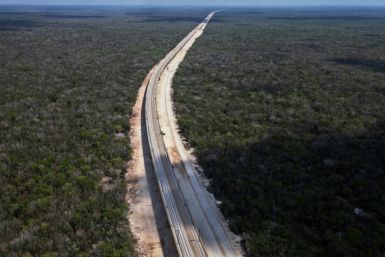RBA Opts to Retain Cash Rate at 3.25%
The experts were correct in their forecast that the Reserve Bank of Australia (RBA) will retain the current 3.25 per cent overnight cash rate when the central bank's monetary committee met on Melbourne Cup Day on Tuesday, Nov 6.
The decision came even if six members of a nine-member shadow RBA board of News Limited believing a rate cut is needed, while two share the experts' sentiment that it should be held and one even is in favour of a rate increase.
Economic data that came out Monday also indicated a rate reduction is warranted.
The RBA pointed to the increase in inflation for the September quarter, partly due to the introduction of the carbon tax which was factored in the decision.
"The introduction of the carbon price affected consumer prices in the September quarter, and there could be some further small effects over the next couple of quarters, RBA Governor Glenn Stevens said in a statement.
"With prices data slightly higher than expected and recent information on the world economy slightly more positive, the board judged that the stance of monetary policy was appropriate for the time being," he added.
News of the RBA decision caused the Australian dollar to further rise to $US1.043 from $US1.0368.
It was the first time in six years that Mr Stevens did not deliver a Cup Day rate change. Since he assumed leadership of the Australian central bank, Mr Stevens had made two Cup Day rate cuts, the first in 2008 and the second in 2011.
The experts pointed out that since Mr Stevens made a surprise rate cut in October, he had the luxury of holding off another rate cut until stronger local or global conditions require one.
Paul Bloxham, chief economist at HSBC and shadow RBA board member, said he pushed for a rate cut to ensure a smooth rebalancing from a mining-driven growth to a consumer- and housing-driven growth. Another shadow board member and Bank of America Merrill Lynch chief economist Saul Eslake agreed with Mr Bloxham that the RBA should reduce the key lending rate to ensure sectors of the Australian economy that are sensitive to interest rate movements are well placed when the investment phase of the resources boom starts to wind down.
Despite the Monday report of the falling job ads, analysts agree that the RBA monetary policy decisions are based on conditions in the past six months, not just a day prior.
"The RBA should cut the cash rate . . . it has just six months to create momentum in the economy sufficient to offset falling mining investment. There are few green shoots in retail, and stabilised housing prices, but beyond that not enough is going on. With an overvalued currency and a government hell-bent on surplus, lower interest rates are the only lever left to pull," wrote Macro Investor editor David Llewellyn-Smith in The Sydney Morning Herald.
With the RBA decision, the ball is now on the court of the banks if they would likewise follow the central bank's policy.






